
Roots
Consider for a moment the quiet strength held within each strand, a testament to resilience, a chronicle of lineage. Our hair, beyond its physical presence, acts as a profound marker, a silent storyteller of who we are, where we come from, and the collective journeys that have shaped our being. This initial exploration invites us to consider the foundational ways communal hair practices have etched identity into the very fabric of human experience. We look at the deep-seated connections between the biological realities of textured hair and the shared human need for belonging, for recognition within a group.
The anatomy and physiology of textured hair, particularly for Black and mixed-race individuals, possess distinct characteristics that influence its care and styling. These unique attributes have historically necessitated communal approaches to maintenance and adornment. Hair follicles, the structures from which hair grows, can produce various curl patterns, from broad waves to tight coils. The shape of the follicle itself plays a role, with more oval or flat follicles yielding curlier strands.
The way these individual strands emerge and interact creates a collective texture, often requiring specific moisture retention strategies and gentle handling to preserve their integrity. Understanding these biological foundations provides a starting point for appreciating why communal care became not just a social activity, but a practical one, rooted in the very nature of the hair itself.
Hair, a living archive, tells tales of identity, lineage, and collective journeys, deeply connected to communal care practices.

Hair Anatomy and Physiology Specific to Textured Hair
Textured hair, with its varying degrees of curl and coil, presents a distinct set of characteristics when compared to straight hair. The cortical cells within each strand are arranged asymmetrically, contributing to the curl. This asymmetry causes the hair to grow in an elliptical or flattened cross-section rather than a round one, leading to the spiral or zig-zag patterns observed.
The cuticle, the outermost protective layer of the hair shaft, tends to be more lifted in textured hair, which can make it more prone to moisture loss and tangling. This structural reality means textured hair often requires particular attention to hydration and protective styling to maintain its health and appearance.
Furthermore, the density of hair follicles on the scalp can vary, impacting the overall fullness and how styles sit. The delicate nature of the curl pattern, particularly at the bends and twists, renders textured hair more susceptible to breakage if not handled with gentleness. This biological predisposition underscores the necessity for specialized care methods, many of which have been passed down through communal learning and practice.

How do Curl Patterns Influence Hair Care Traditions?
The diversity of curl patterns, from loose waves to tight coils, has directly influenced the evolution of communal hair care traditions. Different textures demand different methods of cleansing, conditioning, and detangling. A community sharing similar hair types would naturally pool knowledge, sharing successful techniques for moisture retention, knot removal, and style preservation. This shared experience fosters a collective understanding of what works best for specific hair types, creating a localized body of wisdom that transcends individual trial and error.
For instance, the tightest coils, often described as Z-pattern or S-pattern, may benefit from finger-detangling or wide-tooth combs to avoid breakage, while looser curls might tolerate brushes with softer bristles. These distinctions, learned and refined over generations within communal settings, become integral to the daily rituals of hair maintenance.

Textured Hair Classification Systems
Various systems attempt to categorize textured hair, typically by its curl pattern. While no single system fully captures the vast spectrum of hair diversity, these classifications serve as a common language for understanding general characteristics and recommending care approaches. The most widely recognized system uses numbers and letters, such as 3A, 4B, or 4C, to denote curl tightness and pattern.
- Type 2 ❉ Wavy hair, with a gentle S-bend, ranging from fine to coarse.
- Type 3 ❉ Curly hair, with distinct S-shaped curls that can be loose or tight.
- Type 4 ❉ Coily hair, characterized by tight, springy coils that may form a Z-pattern.
These classifications, though sometimes debated for their limitations, help individuals identify with broader hair communities and access shared knowledge. This shared vocabulary facilitates conversations around product efficacy, styling techniques, and even cultural perceptions of specific hair types.

The Essential Lexicon of Textured Hair
The language surrounding textured hair is rich with terms that describe not only its physical attributes but also the practices and philosophies associated with its care. Terms like “co-washing,” “pre-poo,” “wash-and-go,” “twist-out,” and “braid-out” are more than just technical instructions; they represent established methods, often learned and perfected within communal settings. These terms speak to a shared history of innovation and adaptation in hair care.
Beyond techniques, the lexicon includes words that speak to the cultural significance of hair. “Crown,” for example, is a term often used to describe textured hair, symbolizing its regal beauty and inherent value. This kind of language reflects a collective shift towards self-acceptance and pride, a departure from historical narratives that sought to diminish natural hair.

Hair Growth Cycles and Influencing Factors
Hair growth occurs in cycles ❉ anagen (growth), catagen (transition), and telogen (resting). The length of the anagen phase determines how long hair can grow. For textured hair, factors like genetics, nutrition, and overall health play a role in these cycles. Mechanical stress, such as excessive pulling or tight styling, can shorten the anagen phase or lead to breakage, affecting length retention.
Communal care often involves practices that support healthy growth and minimize damage. Shared advice on diet, stress reduction, and gentle handling contributes to the collective well-being of hair within a community. This holistic approach, passed down through generations, acknowledges the intricate relationship between internal health and external hair vitality.

Ritual
Step into the rhythmic hum of hands working through strands, the murmur of shared stories, the quiet satisfaction of a style taking shape. This section moves beyond the fundamental characteristics of hair to the daily and periodic practices that breathe life into communal hair care. It is here, in the tactile act of styling and tending, that identities are affirmed, bonds are strengthened, and traditions are passed from one generation to the next. Our exploration centers on the practical wisdom that flows through these shared spaces, whether a bustling salon, a quiet living room, or a virtual gathering.
The act of styling textured hair, particularly within communal settings, is a practical application of shared knowledge and cultural expression. From intricate braids to defined coils, each technique serves a purpose beyond mere aesthetics. Protective styles, for instance, shield delicate strands from environmental damage and manipulation, promoting length retention.
Natural styling techniques celebrate the inherent beauty of diverse curl patterns, offering avenues for self-expression. The tools used, often specific to textured hair, are extensions of these practices, honed over time to work in harmony with the hair’s unique structure.
Communal hair practices, from intricate braids to defined coils, are living traditions that affirm identity and strengthen bonds across generations.
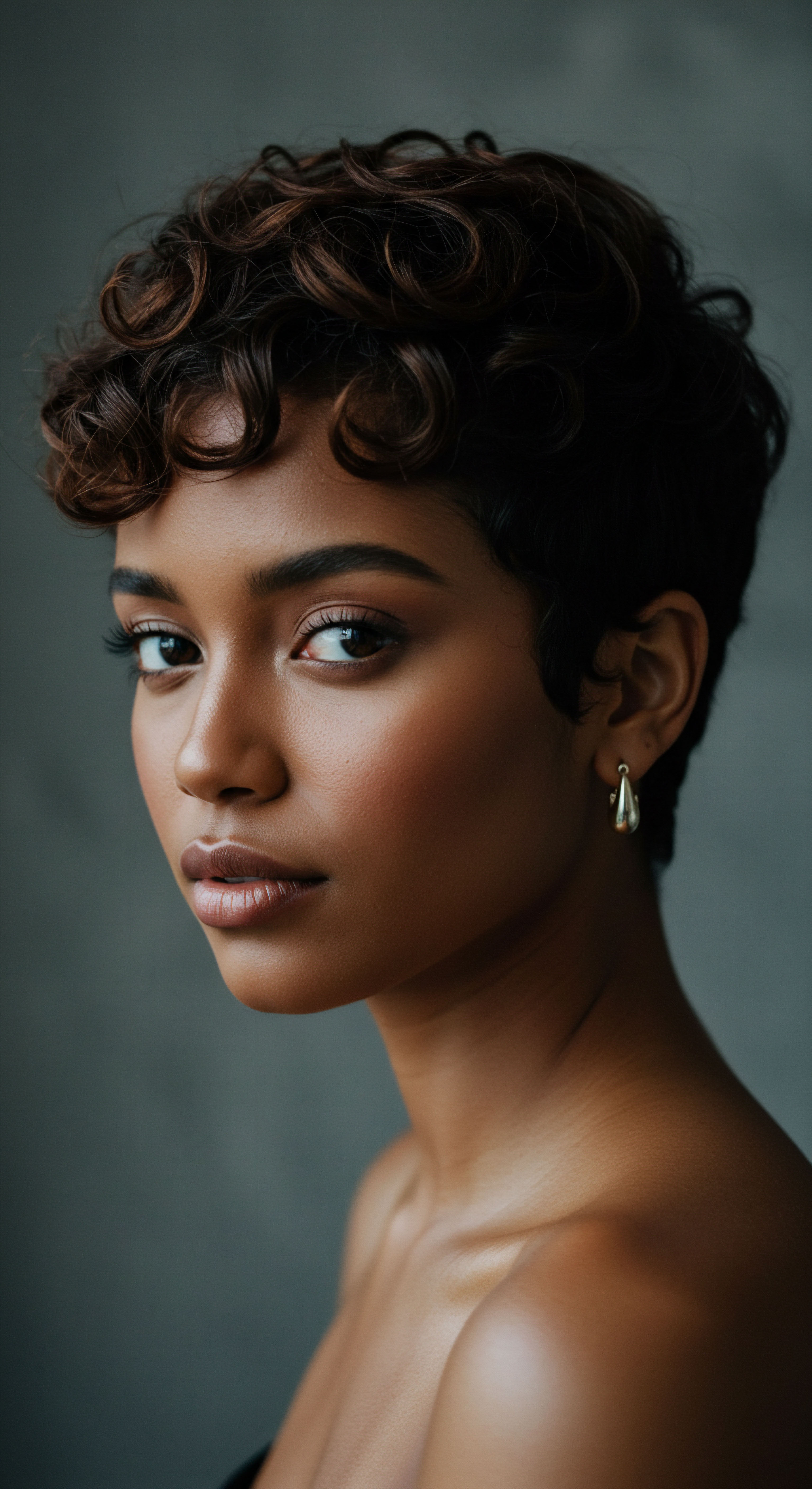
Protective Styling Encyclopedia
Protective styles serve as a shield for textured hair, minimizing manipulation and exposure to external stressors. These styles tuck away the ends of the hair, which are the oldest and most fragile parts, thereby reducing breakage and encouraging length retention. The spectrum of protective styles is broad, each offering unique benefits and aesthetic appeal.
- Braids ❉ Box braids, cornrows, and Senegalese twists are classic examples. They can be created with natural hair or with added extensions for length and fullness. The process often involves several hours, making it a communal activity where stories are exchanged and connections deepened.
- Twists ❉ Two-strand twists, flat twists, and Havana twists offer versatility and can be worn as a style themselves or used as a foundation for other looks. They are gentler on the hair than some other methods.
- Buns and Updos ❉ Simple yet effective, buns and updos keep hair neatly contained, protecting it from friction and tangling. When executed with care, they place minimal tension on the scalp.
The communal aspect of protective styling often involves shared expertise. One person might be skilled at parting, another at braiding, and a third at sealing the ends. This collaborative effort transforms a routine into a shared experience, reinforcing social ties.
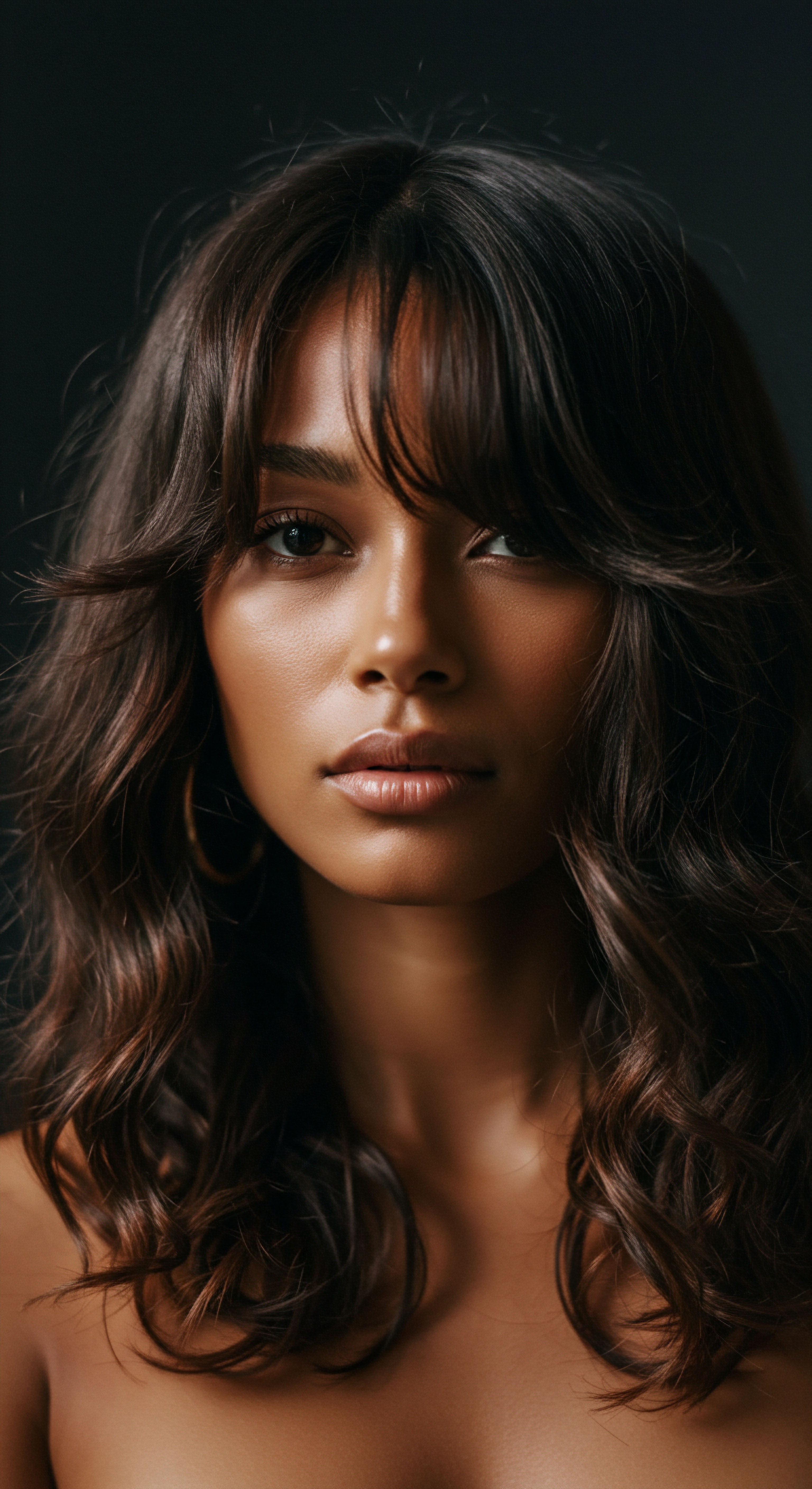
How do Communal Styling Sessions Reinforce Cultural Values?
Communal styling sessions serve as vibrant classrooms and gathering spaces, reinforcing cultural values beyond the immediate act of hair care. During these times, oral histories are passed down, stories of resilience are recounted, and aesthetic preferences rooted in cultural heritage are affirmed. The patience required for intricate styles, the value placed on healthy hair, and the celebration of natural beauty all become part of the shared experience. This practice cultivates a sense of collective identity, where hair becomes a tangible link to ancestry and a living expression of cultural pride.

Natural Styling and Definition Techniques
Natural styling techniques celebrate the inherent texture of hair, allowing coils and curls to take center stage. These methods focus on enhancing definition, minimizing frizz, and maintaining hydration without altering the hair’s natural pattern.
- Wash-And-Go ❉ This method involves cleansing and conditioning, then applying styling products to wet hair to encourage natural curl clumping and definition. It requires understanding one’s unique curl pattern to select appropriate products.
- Twist-Outs and Braid-Outs ❉ These techniques involve twisting or braiding damp hair, allowing it to dry, and then carefully unraveling the sections to reveal a defined, stretched curl pattern. The communal sharing of tips for achieving the best results, from product layering to drying methods, is common.
- Finger Coiling ❉ This precise method involves wrapping individual sections of hair around a finger to create uniform coils. It is time-intensive but yields highly defined results, often shared among those seeking precise definition.
The pursuit of definition and volume in natural styling often becomes a shared journey within communities, with individuals exchanging product recommendations and technique refinements. This shared pursuit of hair wellness fosters a sense of collective learning and support.
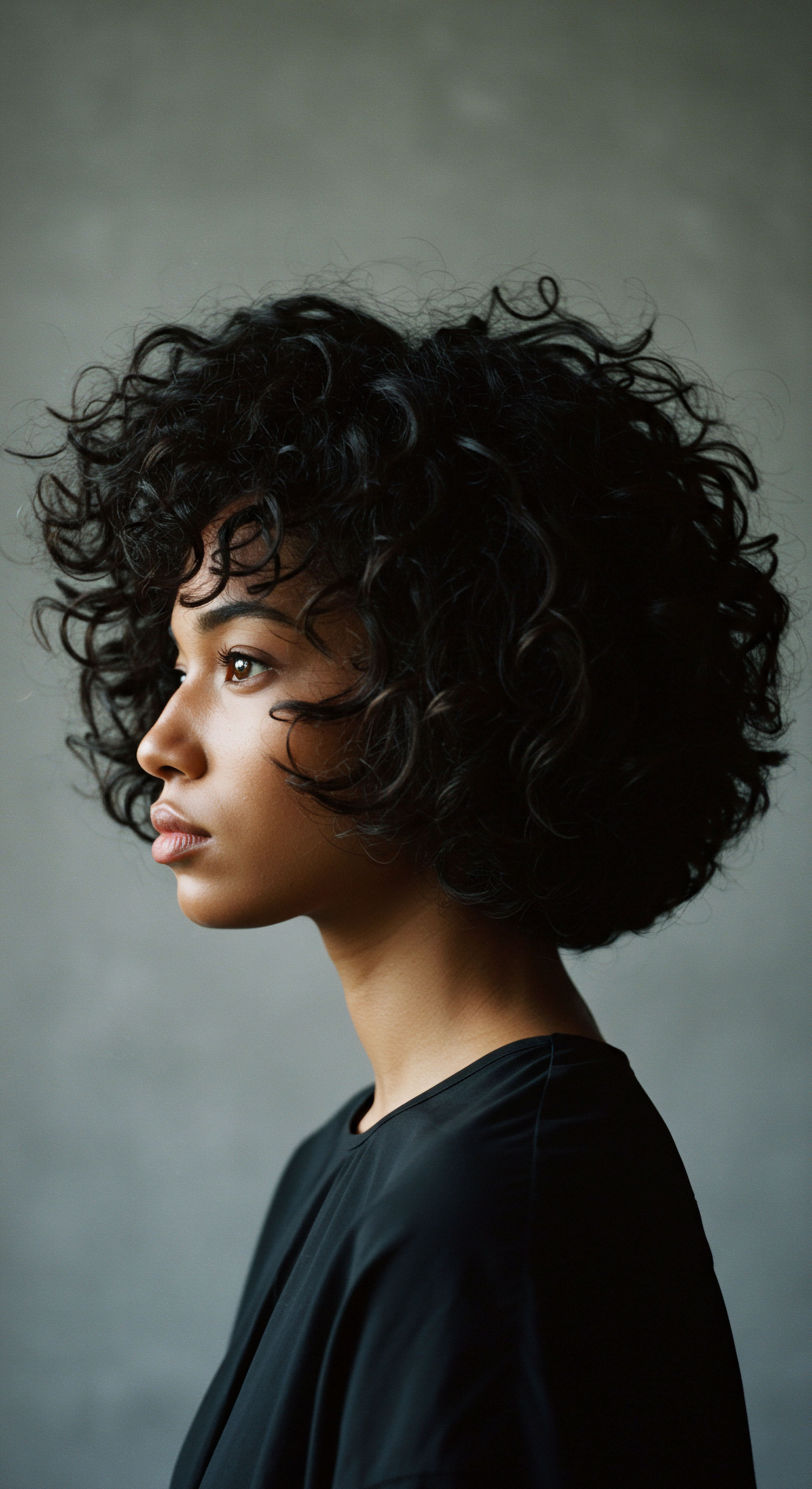
Wigs and Hair Extensions Mastery
Wigs and hair extensions offer versatility and protective benefits, allowing for significant changes in appearance without altering one’s natural hair. The mastery of these techniques often resides within specific community circles, where skills are passed down and refined.
| Enhancement Type Wigs |
| Description Full head coverings, synthetic or human hair, offering diverse styles. |
| Communal Application Shared styling tips, sourcing quality units, custom fitting services within community. |
| Enhancement Type Sew-ins |
| Description Hair extensions braided into cornrows and sewn down, providing a seamless look. |
| Communal Application Stylists specializing in sew-ins, communal installation sessions, maintenance advice. |
| Enhancement Type Clip-ins |
| Description Temporary extensions attached with clips, offering volume or length. |
| Communal Application Quick style changes, shared purchasing resources, styling demonstrations. |
| Enhancement Type Crochet Braids |
| Description Pre-braided or twisted hair looped through cornrows with a crochet needle. |
| Communal Application Group learning sessions, shared techniques for neatness and longevity. |
| Enhancement Type These enhancements, while offering personal style, frequently become a topic of shared knowledge and skill within hair care communities. |
The selection, installation, and maintenance of wigs and extensions require specialized knowledge, often disseminated through informal networks and community-based stylists. This collective expertise ensures that individuals can access these options while prioritizing the health of their natural hair underneath.
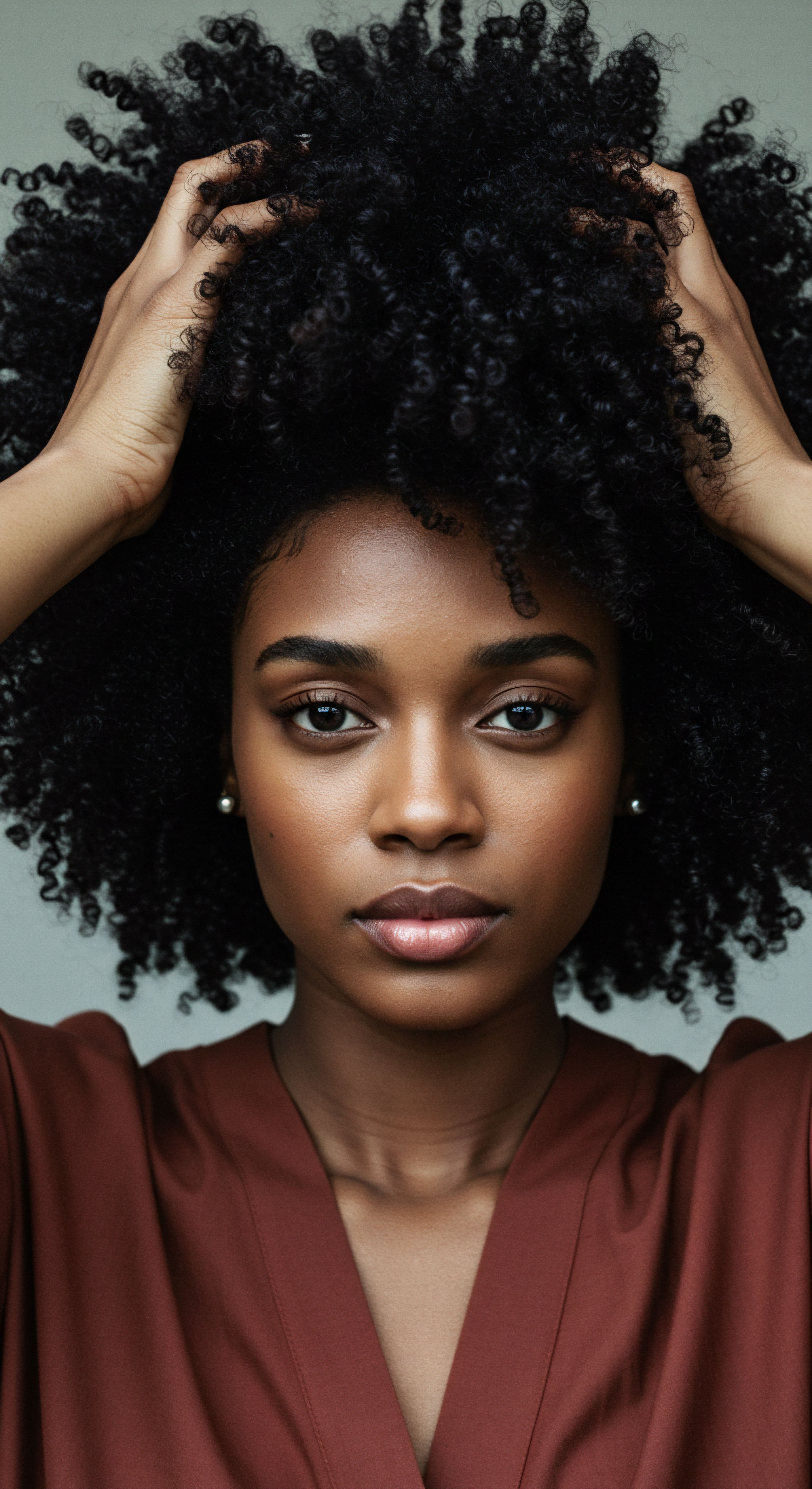
Heat Styling and Thermal Reconditioning
Heat styling, including flat ironing and blow-drying, and thermal reconditioning (chemical straightening) provide temporary or semi-permanent changes to hair texture. While offering sleek appearances, these methods demand a safety-first approach to minimize damage.
The shared understanding within communities often includes warnings about excessive heat, the importance of heat protectants, and the risks associated with chemical treatments. Historically, the pursuit of straightened hair, often driven by societal pressures, was a communal experience, with “pressing parties” or salon visits becoming social events. The collective knowledge about preventing heat damage, such as using lower temperatures or limiting frequency, circulates through these networks.

The Complete Textured Hair Toolkit
A comprehensive toolkit for textured hair care extends beyond products to include specialized implements that facilitate gentle and effective styling. These tools are often shared or recommended within communities, becoming part of the collective wisdom of hair maintenance.
- Wide-Tooth Combs ❉ Essential for detangling wet or damp hair, minimizing breakage.
- Satin or Silk Scarves and Bonnets ❉ Used for nighttime protection, reducing friction and preserving moisture.
- Microfiber Towels ❉ Gentle on hair, absorbing excess water without causing frizz or roughing the cuticle.
The collective experience with these tools leads to shared insights on their proper use and the benefits they offer, further cementing communal care practices.

Relay
Consider the quiet echoes of generations, the silent conversations between past and present, as we consider the profound ways communal hair care transmits identity. This section delves into the intricate interplay of biological, psychological, social, and cultural factors that shape our understanding of hair, moving beyond surface-level discussions to a more profound analysis. Here, science meets heritage, and personal experience intersects with collective memory, revealing how shared hair practices become a powerful conduit for cultural continuity and individual affirmation.
Communal hair care is not merely a set of shared practices; it is a dynamic system that actively shapes and transmits identity across time and space. The psychological impact of collective affirmation, the social bonds forged during styling sessions, and the cultural narratives embodied in specific styles all contribute to a complex understanding of self. This transmission operates through various channels, from direct instruction and observation to the subtle reinforcement of norms and values.
Communal hair care transcends simple aesthetics, acting as a profound conduit for cultural continuity and individual affirmation through shared practices and inherited wisdom.
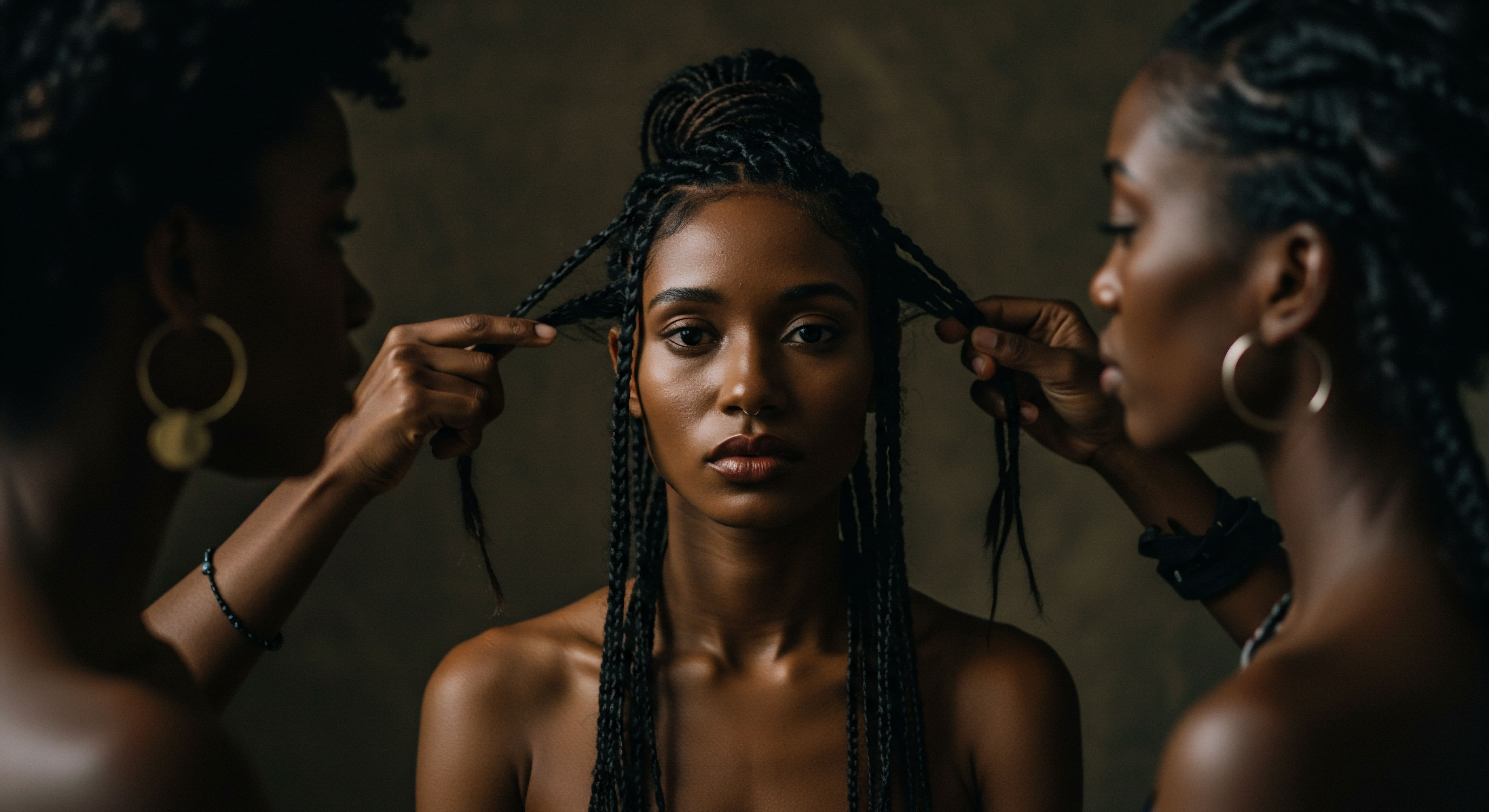
Building Personalized Textured Hair Regimens
While communal knowledge offers a strong foundation, the creation of a truly effective hair regimen requires a personalized approach, tailored to individual hair needs and lifestyle. Yet, even this personalization often begins with collective learning. Shared experiences within a community provide a framework for understanding hair porosity, density, and elasticity, guiding individuals toward products and techniques that suit their unique strands.
For instance, a community might discuss the benefits of protein treatments for low porosity hair or the need for heavier butters for high porosity hair. This shared discourse allows individuals to experiment with informed choices, rather than trial-and-error in isolation. The journey to a personalized regimen often involves consultation with trusted community members or stylists who possess a wealth of collective experience.
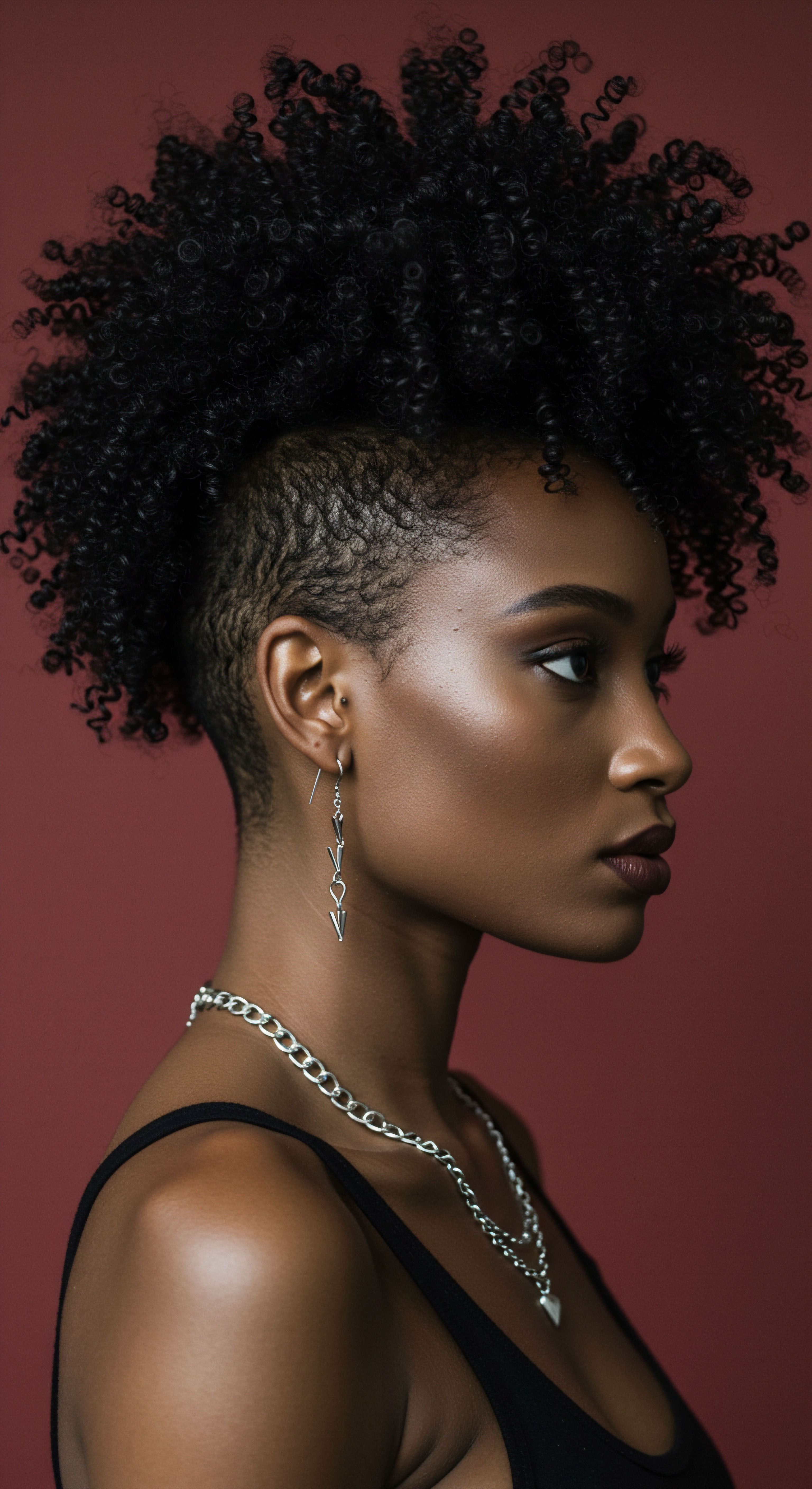
The Nighttime Sanctuary ❉ Essential Sleep Protection and Bonnet Wisdom
Nighttime care represents a crucial, yet often overlooked, aspect of textured hair health, and it is here that communal wisdom truly shines. The practice of protecting hair during sleep, primarily through the use of satin or silk bonnets, scarves, or pillowcases, minimizes friction, prevents tangles, and preserves moisture. This seemingly simple act is a testament to generations of collective understanding about hair’s delicate nature.
The “bonnet wisdom” passed down through families and communities speaks to more than just hair health; it speaks to a legacy of self-care and preservation. It represents a practical, culturally resonant solution to maintaining hair integrity, allowing individuals to awaken with strands that are less prone to breakage and more receptive to styling. This shared ritual creates a sense of continuity, linking daily routines to a broader cultural practice.

Ingredient Deep Dives for Textured Hair Needs
Understanding the ingredients in hair products is paramount for optimal textured hair care. Communal discussions often revolve around the efficacy of various components, from moisturizing agents to protein sources. This collective vetting of ingredients helps individuals make informed choices, avoiding those that might be detrimental to their specific hair type.
For example, communities frequently share insights on humectants like glycerin or hyaluronic acid for drawing moisture into the hair, or emollients such as shea butter and coconut oil for sealing it in. The collective experience of navigating product labels and understanding chemical compositions fosters a more discerning approach to hair care. This shared knowledge acts as a protective barrier against marketing claims that may not align with the actual needs of textured hair.

Textured Hair Problem Solving Compendium
Hair challenges, from dryness and breakage to scalp issues, are common experiences within textured hair communities. The collective wisdom gathered over generations provides a powerful compendium of problem-solving strategies. These solutions are often holistic, considering both internal and external factors.
One powerful illustration of communal hair care’s role in identity is the historical trauma inflicted upon Indigenous peoples in North America through forced hair cutting in residential schools. These institutions, operated by governments and churches, aimed to systematically strip Indigenous children of their cultural identities and assimilate them into Euro-Canadian and Christian ways of living. Upon arrival, children often had their long hair, which holds profound spiritual and cultural significance in many Indigenous traditions, forcibly cut or shaved.
This act was a deliberate attempt to sever their connection to their heritage, family, and self, inducing deep shame and humiliation. As the Department of the Interior’s investigative report on federal Indian boarding schools in the United States outlines, cutting the hair of Indigenous children was a systematic methodology for identity alteration, alongside renaming and prohibiting native languages and cultural practices.
The profound impact of this forced hair cutting extends beyond the individual, creating intergenerational trauma within Indigenous communities. For many Indigenous cultures, hair is an extension of the person, a link to the land and ancestors. Its forced removal was a symbolic castration of spirit and identity. Yet, in the face of this historical oppression, communal hair practices have become a powerful act of resistance and reclamation.
Today, many Indigenous individuals and communities are actively reclaiming their long hair and traditional styles, viewing it as a tangible expression of pride, resilience, and a living connection to their ancestral ways. This collective re-adoption of traditional hair practices serves as a counter-narrative to the attempted erasure, demonstrating the enduring strength of cultural identity even after generations of systematic assault. It is a testament to how communal care, even in its absence or forced alteration, shapes a collective identity of survival and revitalization.

Holistic Influences on Hair Health
Hair health is inextricably linked to overall well-being, a principle deeply embedded in many communal hair care philosophies. Diet, stress levels, sleep patterns, and even emotional states can influence hair’s vitality. Communal knowledge often extends to these broader aspects of health, offering advice that spans beyond topical treatments.
Shared wisdom might include recommendations for nutrient-rich foods that support hair growth, techniques for managing stress, or the importance of consistent sleep for cellular regeneration. This holistic perspective, passed down through generations, acknowledges that truly healthy hair reflects a harmonious balance within the body and mind. The collective understanding that hair is a mirror of internal health reinforces a broader commitment to self-care and communal well-being.

Reflection
Our journey through the landscape of communal hair care reveals a profound truth ❉ hair is far more than mere adornment. It stands as a living testament to identity, a silent chronicle of cultural heritage, and a powerful instrument of collective memory. From the intricate biology of textured strands that necessitates shared methods of care, to the sacred rituals that bind communities, and the enduring resilience displayed in the face of historical attempts at erasure, hair has always been a conduit for self-expression and belonging.
The whispers of ancient braiding circles, the rhythmic cadence of styling sessions, and the quiet pride in reclaimed textures all echo a singular message ❉ when we tend to our hair together, we tend to our shared spirit, strengthening the ties that define us. This continuous dance between individual expression and communal affirmation underscores the enduring power of hair as a symbol of who we are, individually and collectively, in a world that forever seeks to understand its own reflection.

References
- Byrd, Ayana D. and Lori L. Tharps. Hair Story ❉ Untangling the Roots of Black Hair in America. St. Martin’s Griffin, 2014.
- Mercer, Kobena. Welcome to the Jungle ❉ New Positions in Black Cultural Studies. Routledge, 1994.
- Sieber, Roy, and Frank Herreman. Hair in African Art and Culture. Museum for African Art, 2000.
- Tarlo, Emma. Entanglement ❉ The Secret Lives of Hair. Oneworld Publications, 2016.
- Truth and Reconciliation Commission of Canada. Honouring the Truth, Reconciling for the Future ❉ Summary of the Final Report of the Truth and Reconciliation Commission of Canada. James Lorimer & Company Ltd. 2016.
- United States Department of the Interior. Federal Indian Boarding School Initiative Investigative Report. U.S. Department of the Interior, 2022.
- Griebel, Helen Bradley. “The African American Woman’s Headwrap ❉ Unwinding the Symbols.” In Dress and Identity, edited by Mary Ellen Roach-Higgins, Joanne B. Eicher, and Kim K. P. Johnson, 445-460. Fairchild Publications, 1995.
- Dove and CROWN Coalition. The CROWN Act ❉ A Look at Hair Discrimination in the Workplace and Schools. Dove, 2019.
- Teteh, Dede K. et al. “My Crown and Glory ❉ Community, Identity, Culture, and Black Women’s Concerns of Hair Product-Related Breast Cancer Risk.” Health Equity, vol. 1, no. 1, 2017, pp. 24-32.
- Starlight, Fred, and Starlight, Robert. “Strands of Identity and Resilience ❉ Unraveling the Experiences of Indigenous Masculinity in Canada Under British Dominion Through the Lens of Hair.” Dalhousie University, 2022.
- Hickling, Frederick W. and Hutchinson, George. “The Importance of Hair in the Identity of Black People.” Caribbean Journal of Psychiatry, vol. 4, no. 2, 2001, pp. 94-99.